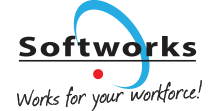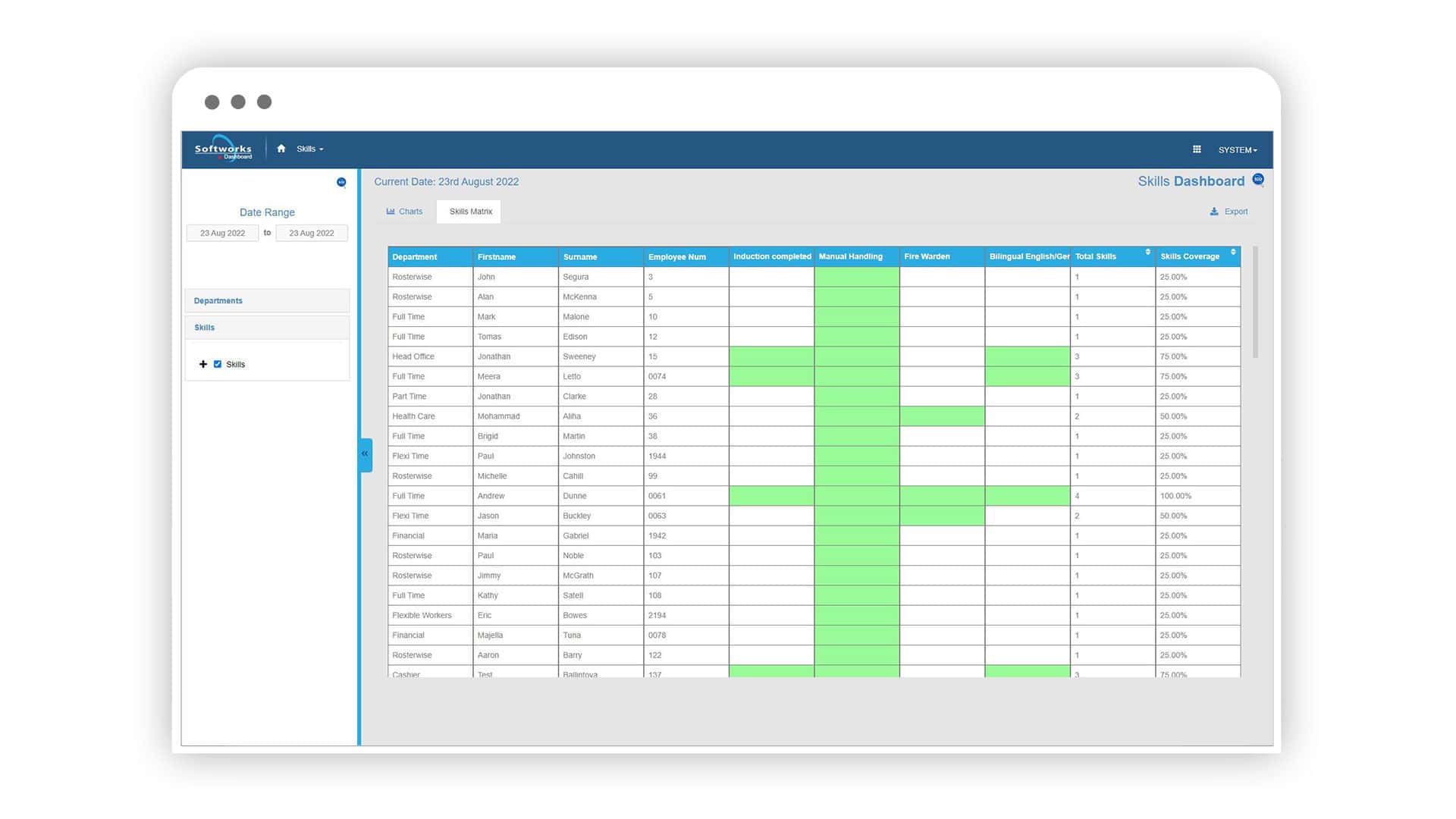The United States workforce is at a critical juncture, confronting an issue that threatens to stifle economic growth and diminish competitive advantage: the widening skills gap. Recent data underscores the gravity of this issue, with a 2022 survey by Deloitte indicating that a staggering 70% of US businesses grapple with finding workers equipped with the necessary qualifications.
The situation appears to be escalating, as evidenced by a 2023 report from the McKinsey Global Institute, which highlights that 87% of businesses now consider the skills gap a pressing concern. Echoing this sentiment, the Pew Research Center’s 2023 study reveals that 60% of American adults recognize the skills gap as a significant hurdle for the workforce.
At its core, the skills gap represents a misalignment between the abilities that workers possess and those demanded by employers. This chasm is not attributable to a single cause but is rather the result of a confluence of factors. The relentless pace of technological innovation demands constant adaptation and the acquisition of new competencies. An aging workforce implies a loss of accumulated knowledge and expertise, while the forces of globalization require a workforce that is both versatile and proficient in an array of skill sets that transcend local markets.
The repercussions of this disconnect are manifold and affect all stakeholders in the economy. Workers without the requisite skills face heightened risks of unemployment or underemployment, leading to personal economic insecurity and broader social challenges. For businesses, the inability to secure skilled labor translates into a loss of competitive edge, potentially leading to the shuttering of operations. On a macroeconomic scale, a skills gap equates to a suboptimal allocation of human resources, resulting in reduced productivity and competitiveness on the global stage.
Recognizing the complexity and the critical nature of the skills gap is the first step toward formulating a robust response. The urgency with which this issue must be addressed cannot be overstated, as the ramifications touch every corner of the American economy. The following sections will delve into the specific roles that businesses and governments can play in bridging this gap, fostering a workforce that is equipped to navigate and triumph in the 21st-century economic landscape.
The Impact of the Skills Gap
The skills gap is not just a theoretical concern—it manifests in very real and tangible consequences for individuals, businesses, and the broader US economy. For individuals, the repercussions are deeply personal and often severe. The absence of necessary skills leads to increased instances of unemployment and underemployment, where workers find themselves in jobs that fail to utilize their abilities fully or match their experience level. This mismatch can have a cascading effect on an individual’s career trajectory, income potential, and overall job satisfaction.

The 2023 Pew Research Center findings articulate a grim reality: individuals affected by the skills gap are more likely to face job instability and financial insecurity, which can have long-term implications for their quality of life and future opportunities.
Businesses, on the other hand, encounter the skills gap as a formidable barrier to maintaining and enhancing their competitiveness. In a marketplace where innovation and agility are paramount, the inability to recruit and retain skilled employees can impede a company’s growth and innovation.
Deloitte’s research indicates that nearly three-quarters of companies feel the pinch of the skills gap, which can lead to delayed product developments, compromised service quality, and an overall inability to meet market demands. This gap not only hampers a company’s immediate operations but also affects long-term strategic planning and investment in future capabilities.
At the macroeconomic level, the skills gap has far-reaching implications for the US economy’s productivity and global standing. A workforce that lacks the necessary skills is often less efficient, and this inefficiency translates into lower productivity rates. The McKinsey Global Institute warns that if left unaddressed, the skills gap could lead to significant losses in economic output, as businesses struggle to operate at full capacity. This productivity slump, in turn, has the potential to curb the country’s economic growth, stifle innovation, and weaken its position in the global economy.
In essence, the skills gap acts as a drag on every aspect of economic activity, from the individual level to the international arena. The resulting challenges are not limited to missed personal and business opportunities but extend to the potential decline of the US’s economic hegemony. As such, the skills gap is not merely an employment issue but a national concern that demands concerted and strategic action from both the private and public sectors.
Strategies for Businesses to Address the Skills Gap
To bridge the skills gap, businesses can adopt various proactive strategies that not only cultivate a skilled workforce but also enhance their own competitiveness and innovation. These strategies include:

Investment in Education and Training
In-house training programs: Develop targeted training initiatives that align with business needs and technological trends.
Tuition reimbursement schemes: Encourage employees to pursue further education by offering to cover tuition costs.
Educational partnerships: Collaborate with academic institutions to shape curriculums that equip students with industry-relevant skills.
Upskilling and Reskilling
Accessible training programs: Provide flexible learning opportunities for employees to acquire new skills on the job.
Continuous learning support: Offer resources and time for employees to engage in lifelong learning.
Inclusivity in Hiring
Diverse talent pools: Expand recruitment efforts to include candidates with varied cultural and professional backgrounds.
Valuing non-traditional education: Recognize the potential of candidates with unconventional educational paths or self-taught skills.
Apprenticeship Programs
Practical skill development: Create apprenticeships that offer hands-on experience and mentorship in specific roles within the company.
Pathways to employment: Use apprenticeship programs as a channel for bringing motivated and trained individuals into full-time roles.
Partnerships with Educational Institutions
Industry-tailored curriculums: Work with schools and universities to design courses that address the current and future needs of the industry.
Joint research and development: Engage in partnerships that drive innovation and provide real-world problems for academic investigation.
Creating a Learning Culture
Environment of growth: Foster a workplace ethos that encourages curiosity, innovation, and professional growth.
Recognition and rewards: Implement systems to acknowledge and reward employees who dedicate time to learning and improving their skill set.
By implementing these strategies, businesses can not only narrow the skills gap but also bolster their workforce’s adaptability and preparedness for the challenges of a rapidly evolving marketplace.
Roles of Governments in Bridging the Skills Gap
Governments play a pivotal role in addressing the skills gap, leveraging policy and funding to create an ecosystem that supports continuous learning and skills development. Here are some of the ways governments can contribute:

Funding and Incentives
Education funding: Increase investment in educational infrastructure to provide state-of-the-art learning environments.
Training incentives: Offer tax breaks or subsidies to businesses that invest in employee training and development programs.
Support for Upskilling Workers
Financial aid for learners: Provide scholarships, grants, and loans to individuals pursuing further education or training.
Lifelong learning accounts: Consider establishing government-supported savings accounts for employees to use for ongoing education.
Public-Private Collaborations
Skills gap analysis: Partner with industries to conduct thorough research on the prevailing skills shortages.
Joint training initiatives: Develop training programs in collaboration with businesses that are specifically tailored to close the skills gap.
Investment in STEM and Community Colleges
STEM education: Fund programs and initiatives that encourage the pursuit of science, technology, engineering, and math careers.
Community college support: Enhance funding for community colleges, making them a more viable option for students seeking affordable education and vocational training.
Assistance for Displaced Workers
Re-skilling programs: Create initiatives to help those displaced by automation or outsourcing to transition into new careers.
Job matching services: Offer services that help displaced workers find new employment opportunities that match their re-skilled competencies.
By engaging in these roles, governments can significantly reduce the skills gap and ensure that the workforce is equipped to meet the demands of a dynamic global economy. This not only benefits the individual workers but also supports businesses and the broader economic health of the nation.
Additional Considerations
In bridging the skills gap, it’s crucial to look beyond traditional methods and consider innovative strategies that tap into the full potential of the workforce. Here are some additional considerations:

Hiring for Potential
Aptitude over experience: Advocate for recruitment strategies that prioritize a candidate’s ability to learn and adapt over their past experience.
Growth mindset: Encourage hiring practices that identify individuals with a growth mindset, willing to evolve with the changing demands of the job market.
Career Development Opportunities
Pathways for advancement: Create clear career pathways within organizations that encourage and reward skill development.
Mentorship programs: Highlight the value of mentorship in cultivating a workforce that is skilled, engaged, and loyal.
Inclusion and Diversity
Diverse perspectives: Emphasize how a workforce composed of varied backgrounds and experiences fosters innovation and a broader range of skills.
Equity in the workplace: Champion policies that promote equity, ensuring all employees have access to the same opportunities for growth and development.
Work Visas for Immigrants
Talent attraction: Make the case for immigration policies that attract highly skilled individuals to fill critical gaps in the workforce.
Global expertise: Discuss the benefits of international talent, including specialized knowledge and skills that may be scarce domestically.
Promoting Apprenticeships
Government support: Suggest ways that governments can incentivize the creation of apprenticeship programs through funding and policy support.
Industry collaboration: Encourage the development of apprenticeship models in partnership with industries, aligning programs with real-world job skills.
By considering these additional strategies, businesses and governments can work together to create a more adaptable, diverse, and capable workforce, positioning the economy for growth and innovation.
Leveraging Technology to Bridge the Skills Gap
In the face of a widening skills gap, organizations are turning to Employee Learning and Skills Management Software to ensure their workforce is adept and prepared for the demands of tomorrow. This technology serves as a cornerstone for developing a skilled workforce aligned with the strategic needs of a business.
The software streamlines the planning and monitoring of employee training, significantly reducing the administrative burden. By automating processes from enrollment to completion, it frees up management to focus on strategic development rather than logistical details. Moreover, it plays a crucial role in managing budgets and optimizing schedules to extract the greatest value from training investments.
One of the pivotal benefits of this software is its ability to ensure compliance with industry regulations, particularly within sectors where ongoing certification is mandatory. It alerts managers proactively when an employee’s skills or certifications are nearing expiration, thereby maintaining continuous compliance.
Additionally, the software’s reporting and analytics capabilities offer deep insights into the workforce’s competencies, enabling data-driven decision-making. This helps in identifying not just current skill shortages but also in forecasting future training needs.
Overall, the adoption of Employee Learning and Skills Management Software equips organizations with the tools to adapt to changing skill requirements, maintain regulatory compliance, and enhance the overall productivity and agility of their workforce.
Conclusion
In conclusion, the skills gap in the United States workforce represents a multifaceted challenge with profound implications for the nation’s economic future. Businesses and governments alike must acknowledge the urgency of this issue and collaborate on comprehensive strategies to address it.
For businesses, this means investing in education and training, embracing inclusive hiring practices, fostering apprenticeships, partnering with educational institutions, and cultivating a workplace culture that prioritizes growth and learning.
For governments, the focus should be on funding and incentivizing education and training, supporting upskilling efforts, establishing public-private collaborations, investing in STEM and community colleges, and providing assistance to displaced workers.
Additionally, innovative approaches like hiring for potential and promoting a growth mindset can unlock new reservoirs of talent and adaptability within the workforce. By recognizing that the skills gap is more than an employment issue – that it is a national economic concern – all stakeholders can contribute to a systemic solution that not only bridges the current divide but also anticipates and prepares for the needs of the future. In doing so, the US can ensure its workforce remains resilient, its businesses competitive, and its economy robust in the face of global challenges and technological advancements.
Request a free Demo!
Take the first step towards a complete workforce management solution. Talk to us today!
About Tomislav Rucevic
Tomislav Rucevic, an SEO Specialist at Softworks, stands out as more than just a marketer. He’s a fervent writer and influential thinker passionate about Workforce Management, HR, and work-life dynamics. Holding an MBA in Marketing, Tomislav excels in creating content that delves into the complexities of the modern workplace.
His dedication to writing on these topics is highlighted in his MBA thesis, which examined the link between Employee Motivation and Quality Improvement. At Softworks, he expertly merges his SEO skills with his writing prowess, contributing to the company’s digital success and advancing discussions on enhancing work environments and achieving work-life balance.




